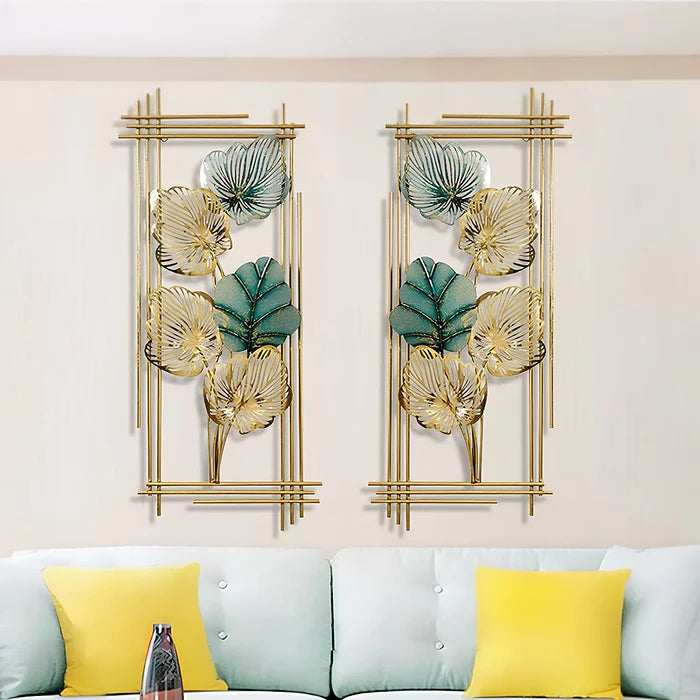As the new year begins, many people feel inspired to refresh their living spaces, and wall art can be a perfect way to make a statement. Creating a visually appealing wall art arrangement can transform your space, making it feel more cohesive and personalized. Whether you're hanging a single statement piece or curating a gallery wall, the right approach ensures balance and harmony, breathing new life into your home for the year ahead.
Understanding the Basics of Wall Art Arrangement

To create a captivating display, consider the principles of balance, symmetry, and focal points. Balance ensures that the visual weight of each piece is evenly distributed, while symmetry can create a sense of order and elegance, especially when mirroring artworks or using even spacing. Establishing a focal point, such as a standout piece of art or a central arrangement, helps anchor the display and draw the eye, making the entire wall feel intentional and harmonious. These guidelines help maintain visual harmony and prevent your space from feeling cluttered or overwhelming, making your wall art not only beautiful but thoughtfully composed.
Choosing the Right Placement for Wall Art
The Placement of Your Wall Art
The placement of your wall art plays a critical role in achieving the desired aesthetic.
Room Size
Larger walls can accommodate bigger art pieces or multiple artworks, making them ideal for statement pieces that set the tone for the entire room. You can explore oversized canvases, expansive photo collections, or even mixed media installations to create a dramatic visual impact. Consider combining a single large piece with smaller complementary art for a layered effect.
Wall Space
Centering art at eye level, typically around 57 inches from the floor, is often recommended as it aligns with the average human eye level, ensuring the artwork is comfortably visible. This standard height helps create a balanced visual experience and works well in most settings, from galleries to residential spaces. For rooms with higher ceilings, you may need to adjust slightly to maintain proportionality and harmony within the space.
Furniture Alignment
Art should complement nearby furniture, such as aligning above a sofa or bed, to create a sense of unity and flow within the space. According to interior design experts, ensuring that artwork is proportionate to the furniture below it is essential for achieving a harmonious look. A good rule of thumb is to keep the artwork about two-thirds the width of the furniture piece and position it 6-8 inches above the top edge to maintain visual balance and avoid a disconnected appearance.
Wall Art Placement Tips for Different Rooms
Different rooms call for different approaches to wall art placement:
-
Living Room: Anchor large pieces above the sofa or create a gallery wall for a focal point.
-
Bedroom: Consider symmetrical arrangements above the bed for a calming effect.
-
Hallway: Use smaller, evenly spaced pieces for a cohesive look.
-
Office Space: Inspire creativity with motivational quotes or abstract art.
How to Arrange Paintings on a Wall
Arranging paintings requires careful planning to avoid unnecessary holes and adjustments. It involves thoughtfully considering the layout, measuring distances accurately, and ensuring proper placement before committing to hanging. Taking the time to plan thoroughly helps achieve a harmonious and professional-looking display while minimizing potential wall damage.

Hanging Two Pictures Staggered
Staggering two pictures adds dynamic movement to your wall display by creating visual interest and breaking up uniformity. To achieve this effect successfully, consider the scale and shape of each piece, ensuring they complement each other rather than compete for attention. Position the first picture at eye level for optimal visibility, then place the second slightly lower and offset to the side, maintaining a balanced distance between the two. This technique works especially well in spaces where you want to create a focal point without overwhelming the wall.
Arranging Wall Decor for Visual Impact

Mixing wall decor elements can significantly elevate your interior design by adding layers of depth and visual interest. Blending different styles and materials creates a rich, curated look that feels both personal and dynamic. Experiment with combining various artistic elements such as framed prints, canvases, and three-dimensional pieces to achieve a unique balance. Using different shapes, sizes, and textures ensures the display remains visually engaging while still maintaining a cohesive aesthetic.
-
Frames of Different Sizes: For a modern eclectic look.
-
Mirrors: To reflect light and create the illusion of more space.
-
Shelves: Add plants, books, or small sculptures for texture.
Creative Wall Art Arrangement Ideas
When planning your wall art, let creativity guide you. Think about how each piece contributes to the overall atmosphere of the room and consider experimenting with different layouts before committing to a final design. Pay attention to the balance between colors, shapes, and themes, ensuring the arrangement reflects your personal style. Incorporating diverse elements can make your wall art not only visually striking but also meaningful, turning your walls into a reflection of your unique taste and experiences.


